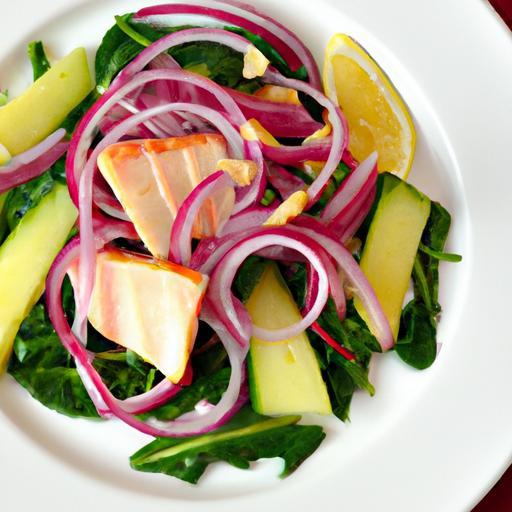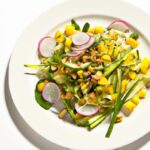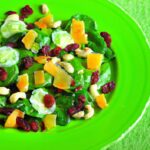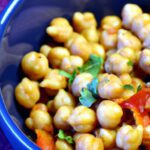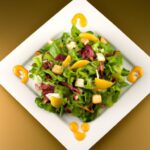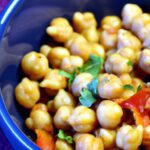In the bustling kitchens of today’s health-conscious world, recipes are more than just a list of ingredients and steps-they’re a code waiting to be cracked. “Decoding Recipes: Reading with a Healthy Twist in Mind” dives into the art of interpreting culinary instructions through a wellness-focused lens. This journey unlocks the secrets behind every measurement, method, and flavor pairing, transforming the way we approach cooking. Whether you’re a seasoned foodie or a curious beginner, learning to read recipes with health in mind empowers you to create dishes that delight the palate and nourish the body. Prepare to sharpen your decoding skills, as we blend creativity with nutrition to make every meal a mindful masterpiece.
Decoding Recipes: Reading with a Healthy Twist in Mind
Decoding recipes with a healthy twist in mind opens a world of culinary possibilities, empowering you to make smarter choices that nourish your body without sacrificing flavor. By mastering how to read ingredient labels, control portion sizes, swap out less nutritious components, and balance flavors, you elevate everyday dishes into vibrant, wholesome meals that satisfy both palate and health goals.
Prep and Cook Time
Prep: 15 minutes Cook: 25 minutes Total: 40 minutes
Yield
Serves 4
Difficulty Level
Medium
Ingredients
- 1 cup organic quinoa, rinsed
- 2 cups low-sodium vegetable broth
- 1 cup chopped kale, stems removed
- 1 red bell pepper, diced
- 1 small red onion, finely chopped
- 2 cloves garlic, minced
- 1 tbsp extra virgin olive oil
- 1 tsp smoked paprika
- Juice of half a lemon
- Salt and freshly ground black pepper, to taste
- 2 tbsp chopped fresh parsley (optional garnish)
Instructions
- Begin by understanding ingredient labels: Choose quinoa labeled as organic and ensure your vegetable broth is low-sodium to manage salt intake. This simple habit enhances overall nutrition immediately.
- Cook quinoa: In a medium saucepan, combine the rinsed quinoa and vegetable broth. Bring to a boil, then reduce heat to low, cover, and simmer for 15 minutes or until all liquid is absorbed.
- Sauté aromatics and veggies: While quinoa cooks, heat the olive oil in a large skillet over medium heat. Add the garlic, red onion, and red bell pepper. Sauté until fragrant and softened, about 5 minutes. Stir occasionally to avoid sticking.
- Add kale and spices: Throw in the chopped kale and sprinkle smoked paprika over the mixture. Stir well and cook until kale wilts, roughly 3 minutes. This is a great flavor balancing step, as paprika adds warmth without calories.
- Combine and finish: Fluff cooked quinoa with a fork, then stir into the skillet with the sautéed vegetables. Mix thoroughly and season with lemon juice, salt, and black pepper to taste. The lemon brightens the dish beautifully while cutting down on the need for extra fat or salt.
- Serve instantly: Transfer to plates and garnish with fresh parsley for a pop of color and freshness.
Chef’s Notes
- Swap smart: Use cauliflower rice instead of quinoa for an even lower-carb option.
- Master portion control: Measure servings with a food scale or standard measuring cups to ensure balanced nutrition. This step is essential when decoding recipes with a healthy twist in mind.
- Flavor balancing: If paprika isn’t your favorite, try cumin or coriander for a different but equally light spice profile.
- Make-ahead tip: Prepare the quinoa and sautéed veggies separately and combine just before serving to keep textures fresh.
Serving Suggestions
Plate this vibrant quinoa and kale sauté alongside a dollop of Greek yogurt or tzatziki for creamy contrast. Add a sprinkle of toasted almonds or sunflower seeds for crunch and additional protein. Garnishing with lemon zest will intensify the citrus notes, perfectly complementing the smoky paprika.
| Nutrient | Per Serving |
|---|---|
| Calories | 280 kcal |
| Protein | 8 g |
| Carbohydrates | 40 g |
| Fat | 7 g |
Discover more practical tips on portion control and ingredient swaps in our Healthy Cooking Basics guide. For expert insights into reading nutrition labels, visit EatRight.org.

Q&A
Q&A: Decoding Recipes – Reading with a Healthy Twist in Mind
Q1: What does it mean to “decode” a recipe?
A1: Decoding a recipe means looking beyond the instructions and ingredients list to truly understand what the dish is bringing to your table – nutritionally, flavor-wise, and health-wise. It’s like being a culinary detective who reads between the lines to spot hidden sugars, excess fats, or undercover superfoods.
Q2: Why should I read recipes with a healthy twist in mind?
A2: Recipes are often written with taste and tradition in mind, but not always with health on the front burner. Reading them through a wellness lens lets you spot opportunities to boost nutrition, cut down on unhealthy extras, or substitute smarter ingredients – helping you enjoy indulgence and nourishment in harmony.
Q3: What are the first things to check when reading a recipe for a healthier version?
A3: Start by scanning the ingredient list for processed items, added sugars, and saturated fats. Then consider portion sizes and cooking methods – are they frying or steaming? Next, look for ingredient swaps: Can the butter be replaced with olive oil? Can heavy cream be lightened by Greek yogurt? Spotting these helps set the stage for a health-boosted makeover.
Q4: How can I maintain flavor while making recipes healthier?
A4: Flavor is your best friend, so don’t sacrifice it! Use fresh herbs, spices, citrus zest, or a splash of vinegar to punch up taste without adding calories. Roasting vegetables caramelizes their natural sugars, boosting flavor without extra fat. Small tweaks can make a big impact on both health and satisfaction.
Q5: Are there particular ingredients to watch out for?
A5: Yes! Watch out for hidden sugars (in sauces, dressings, and marinades), refined flours, and overly salty condiments. Instead, consider whole grains, natural sweeteners like honey or maple syrup in moderation, and homemade sauces where you control the salt and fat content.
Q6: What mindset helps the most when adapting recipes for a healthy twist?
A6: Think of recipe reading as a dialogue, not a rulebook. Be curious, experiment confidently, and trust your palate. It’s about balance – keeping the joy of eating alive while nourishing your body. When in doubt, focus on whole, colorful ingredients and cooking methods that preserve nutrients.
Q7: Can decoding recipes with health in mind save time and money?
A7: Absolutely! By understanding what you’re cooking, you avoid unnecessary or expensive specialty ingredients. Plus, healthier swaps often come from pantry staples like beans, grains, or seasonal veggies. Cooking smarter means less waste and fewer extra trips to the store.
Q8: Where can I practice decoding recipes effectively?
A8: Start with your favorite recipes that may need a health reboot – family classics or takeout-inspired dishes. Try reading recipe blogs, cookbooks with nutrition notes, or even nutrition labels on packaged items you use. Over time, you’ll build a skill set that lets you look at any recipe and instantly spot the healthy hacks.
Q9: How does decoding recipes empower long-term healthy eating?
A9: It transforms you from a passive cook into an intentional creator. This skill helps you customize meals to your personal needs and preferences, making healthy eating sustainable and enjoyable – not a chore. It’s the key to turning everyday cooking into a delicious, nourishing adventure.
Q10: Any final tips for readers eager to start decoding recipes with a healthy twist?
A10: Dive in with curiosity and playfulness. Don’t get locked into perfection – small changes add up! Keep a notebook or app to jot down successful swaps or flavor combos. Remember: every recipe is a chance to learn, grow, and savor food that loves you back. Happy decoding!
The Way Forward
As you close the chapter on decoding recipes with a healthy twist, remember that every ingredient tells a story-and every choice crafts your culinary narrative. Reading recipes through the lens of nutrition transforms cooking from a routine into a mindful adventure, where flavor and wellness walk hand in hand. So next time you pick up a recipe, think beyond the instructions; envision the vibrant, wholesome meal you’re about to create. In this way, decoding recipes becomes more than following steps-it becomes an art of nourishing your body and delighting your senses, one thoughtfully chosen ingredient at a time.
